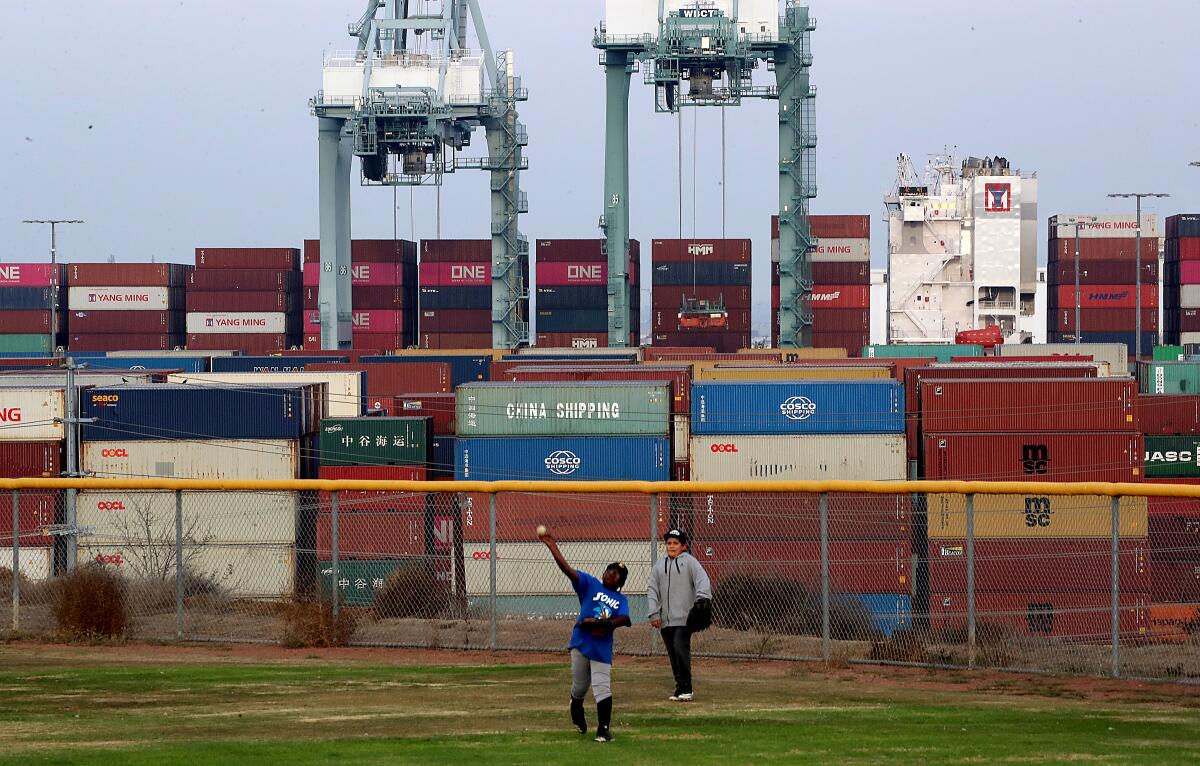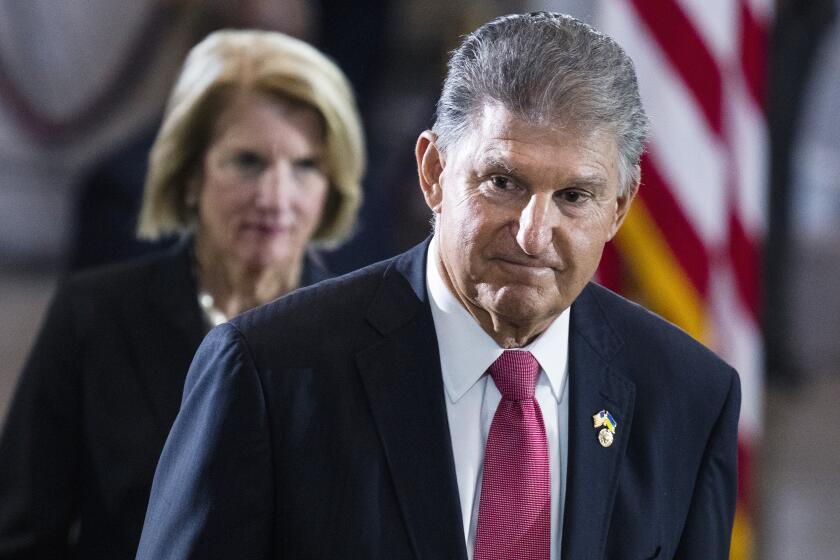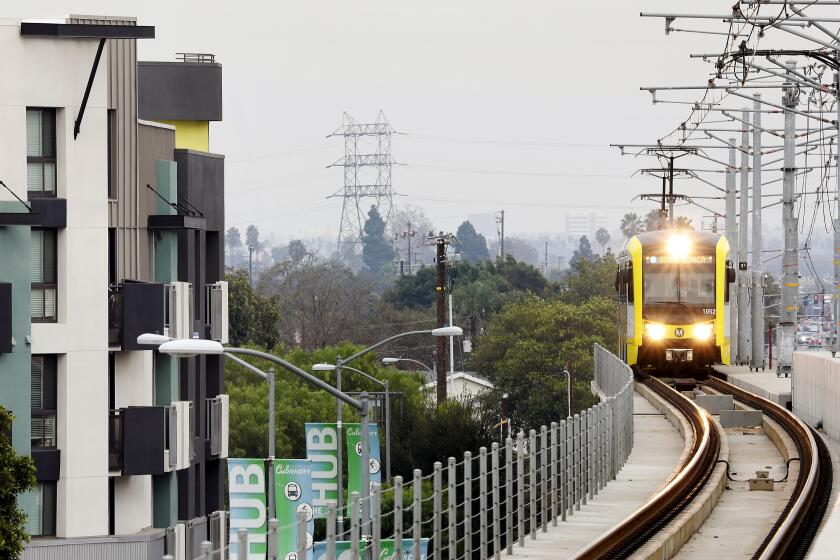Editorial: Port of L.A.’s broken clean-air pledges show the need for regulation

- Share via
The ports of Los Angeles and Long Beach are a hub of international trade, and also the biggest source of smog-forming emissions in Southern California because of their heavy concentration of diesel-guzzling trucks, ships, trains and cargo-handling equipment.
But leaders of the city-owned ports have for too long treated their pledges to cut air pollution as aspirations rather than imperatives.
Perhaps nowhere is that clearer than in the nearly two-decade-long legal battle over the Port of L.A.’s environmental promises at the 142-acre China Shipping North America terminal near the Vincent Thomas Bridge. In a 2004 settlement of a lawsuit by community and environmental groups over an expansion of the terminal, city officials agreed to a slew of measures to cut pollution from ships, trucks and equipment, among other actions at the terminal. More than a decade later, city officials revealed they had failed to carry out many of the requirements — and The Times reported they had even granted the Chinese government-owned shipping company leasing the terminal secret waivers.
It was a shocking acknowledgment of years of broken promises. The L.A. port, under its joint 2006 Clean Air Action Plan with the Port of Long Beach, had pledged to slash emissions that worsen air quality across Southern California and damage people’s health in harbor area communities. But when its failures at the China Shipping terminal came to light in 2015, the city argued it was essentially powerless to deliver the air quality improvements it had pledged. The port claimed that because China Shipping, which operates one of the complex’s largest terminals under a long-term lease, was not party to the settlement, it could not be forced to comply — and that some of the measures were “operationally or economically infeasible” anyway.
Sen. Joe Manchin has doomed President Biden’s climate agenda. The administration needs to move on and pursue climate action using its executive powers.
In 2020 the City Council adopted a revised list of measures for the terminal that eliminated or watered down some of the port’s unfulfilled pledges. Community groups and environmentalists filed suit challenging the scaled-back air quality measures for the terminal, along with local air quality officials, who were joined by the California Air Resources Board and state attorney general’s office.
A recent court ruling in the case found that the city’s 2020 approval of a watered-down environmental report violated the California Environmental Quality Act, is “not legally enforceable” and must be set aside. The ruling shows, once again, that the port cannot be trusted to carry out its own pledges to improve air quality and protect public health. While talking about their environmental virtues, city officials have demonstrated over and over that they will prioritize the flow of goods and industry profits over air quality.
Harbor area residents have suffered from years of delays by port and air quality officials and have been forced to live with dirtier air than they were promised. It has now been five years since L.A. Mayor Eric Garcetti and Long Beach Mayor Robert Garcia pledged to turn the ports into zero-emission operations, by 2030 for cargo-handling equipment and by 2035 for trucks. But there are few indications the ports are making real progress, as they did under their previous 2006 clean-air plan.
If state leaders are serious about making California affordable, they should block local laws that require parking that may be unnecessary and costly.
Fortunately, there is a solution that would go beyond addressing pollution at a single terminal and hold both ports accountable for their clean-air pledges. The South Coast Air Quality Management District, which spent years in fruitless negotiations with the ports over a voluntary agreement to cut emissions, is developing regulations to force them to act. A final rule is expected in 2023.
It’s an important step for an agency that for years talked about using its authority to regulate pollution at the ports but failed to act. One concept under consideration is to apply the rules to terminal operators, bypassing port officials altogether. Setting consistent and enforceable air quality standards, as the South Coast AQMD plans to do, would also address another city and industry complaint: that having tougher clean-air rules for one terminal puts it at a competitive disadvantage to others.
As the China Shipping debacle shows, pledges to cut emissions, without rules to back them up, are little more than words on a page. Port officials can drag out such promises for years, with nothing to show but excuses. It’s time to fix that with rules to finally deliver the clean air people have been promised.
More to Read
A cure for the common opinion
Get thought-provoking perspectives with our weekly newsletter.
You may occasionally receive promotional content from the Los Angeles Times.












